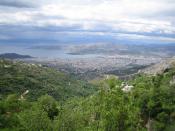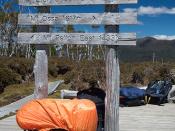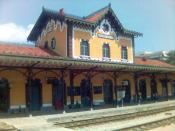Pelion, land of the legendary Centaurs, the site chosen by the ancient gods for their weddings and celebrations, rises in lush magnificence to the northeast of Volos.
It was here that the centaur Cheiron, the wise teacher of demigods and heroes, gave his pupils daily instruction in the proper care of body and soul. Here, too, the first beauty contest took place between Thetis and Eris.
'Many leaved' Pelion was an inspiration to Homer, Pindar and Euripides but also to the more modern popular muse who sung of the unquenchable desire of the Greek people for freedom.
The highest peaks of Pelion (Pliasidi, 1.548 m., Pourianos Stavros, 1.610 m.) are in the northern part of the range. Its inaccessible eastern flank, with the Aegean stretching out into the distance like a vast mirror, comes to an abrupt end in the sea, creating wildly beautiful rocky shores.
Conversely, the tranquil, calm coast of the western flank on the Pagasitic gulf is much easier to reach and encourages shipping activity.
Pelion's picturesque villages, sometimes clinging to wooded slopes or perched on steep bluffs, sometimes hidden away in verdant ravines, are so much a part of the scenery that, seen from a distance they create the impression of having 'sprouted up' along with the trees.
The distinctive traditional architecture of the old houses with their narrow windows and decorated walls, stone stairways and roofs of grey or greeny slate; the Byzantine churches with wonderful wall paintings and icon screens; the winding cobbled paths, sculpted fountains, courtyards redolent of basil and gardenia; squares paved with huge flag stones where the cheerful bubbling of a little brook is never absent - are all typical features of a Pelion village.
Climbing northeast of Volos, the road bisects the charming suburb of Ano Volos (5 km.), with...


